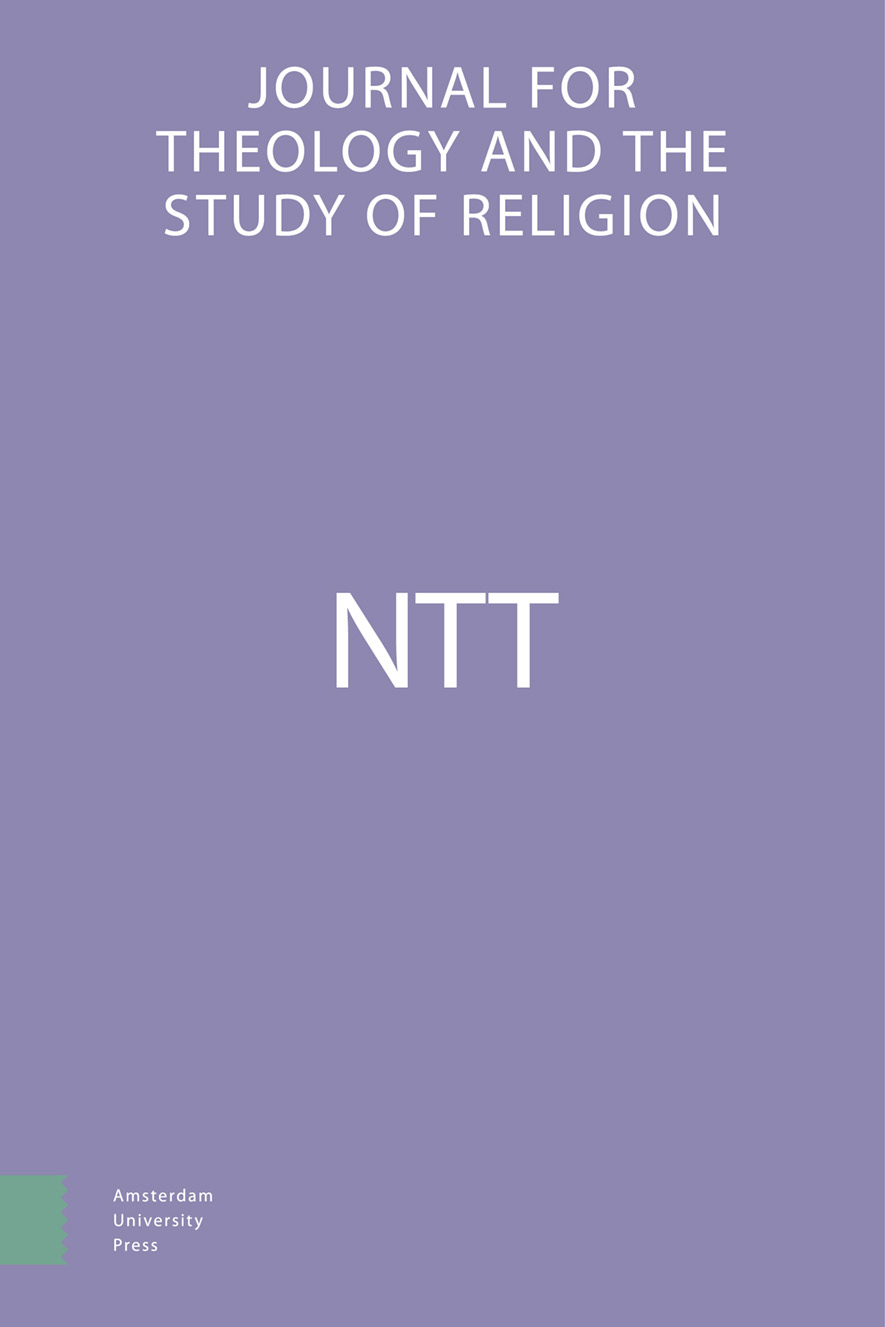- Home
- A-Z Publicaties
- NTT Journal for Theology and the Study of Religion
- Previous Issues
- Volume 78, Issue 3, 2024
NTT Journal for Theology and the Study of Religion - Volume 78, Issue 3, 2024
Volume 78, Issue 3, 2024
Taal:
Engels
- Article
-
-
-
Evolving Scholarship on Ancient Judaism and Christianity
Meer MinderDoor Peter J. TomsonAbstract The article gives an overview of the publications and the editorial policy of Compendia Rerum Iudaicarum ad Novum Testamentum since its inception in 1969. It was presented as an introductory address at a symposium presenting CRINT 16, The Literature of the Sages: A Re-visioning, edited by Professor Christine Hayes of Yale University, in Utrecht, the Netherlands, on March 21, 2023. While making some minor adapta Read More
-
-
-
Rabbinic Literature: To See and See Again
Meer MinderDoor Christine HayesAbstract The Literature of the Sages: A Re-visioning presents the major works of classical rabbinic Judaism as inter-related aggregates analyzed through three broad perspectives: intertextuality (the multi-directional relationships among and between rabbinic texts and non-rabbinic Jewish sources), east and west (the impact on rabbinic texts of the cultures of the Hellenistic, Roman, and Christian West and the Sasanian East Read More
-
-
-
Review Essay: The Literature of the Sages – A Re-visioning
Meer MinderDoor Lutz DoeringAbstract This essay reviews the 2022 volume, The Literature of the Sages: A Revisioning, edited by Christine Hayes in the series Compendia Rerum Iudaicarum ad Novum Testamentum (CRINT).
-
-
-
What Is Intertextuality Made Of?
Meer MinderDoor Monika AmslerAbstract This review article predominantly focuses on the way intertextuality is addressed in The Literature of the Sages: A Re-visioning. A significant and informative portion of the work is dedicated to intertextuality, including a comprehensive history of the respective scholarship in the study of rabbinic texts. Indeed, rabbinic texts are full of intertextuality in terms of parallels, implicit or explicit referentiality, quotes, allus Read More
-
-
-
Halakhah and Aggadah within Rabbinic Study Culture
Meer MinderDoor Yair FurstenbergAbstract The section on halakhah and aggadah in the recent volume of The Literature of the Sages addresses the complex relations between legal and non-legal materials, and the ways their juxtaposition creates a richer, multilayered view of normativity. At the same time, we learn that the merging of legal and non-legal materials is a result of intentional redactional activity, while the underlying sources reflect the separation Read More
-
-
-
Approaching Late Antique and Rabbinic Judaism
Meer MinderDoor Eric OttenheijmAbstract The “lens” approach guiding The Literature of the Sages: A Re-visioning (2022) fits a new trend in handbooks on rabbinic literature. Reviewing handbooks produced after the Strack-Billerbeck commentary on the New Testament shows how their focus shifted from addressing and countering supersessionist views as embedded in the Spätjudentum paradigm by providing philological critique, towards synchronic appr Read More
-
Volumes & issues
-
Volume 79 (2025)
-
Volume 78 (2024)
-
Volume 77 (2023)
-
Volume 76 (2022)
-
Volume 75 (2021)
-
Volume 74 (2020)
-
Volume 73 (2019)
-
Volume 72 (2018)
-
Volume 71 (2017)
-
Volume 70 (2016)
-
Volume 69 (2015)
-
Volume 68 (2014)
-
Volume 67 (2013)
-
Volume 66 (2012)
-
Volume 65 (2011)
-
Volume 64 (2010)
-
Volume 63 (2009)
-
Volume 62 (2008)
-
Volume 61 (2007)
-
Volume 60 (2006)
-
Volume 59 (2005)
-
Volume 58 (2004)
-
Volume 57 (2003)
-
Volume 56 (2002)
-
Volume 55 (2001)
-
Volume 54 (2000)
-
Volume 53 (1999)
-
Volume 52 (1998)
-
Volume 51 (1997)
-
Volume 50 (1996)
-
Volume 49 (1995)
-
Volume 48 (1994)
-
Volume 47 (1993)
-
Volume 46 (1992)
-
Volume 45 (1991)
-
Volume 44 (1990)
-
Volume 43 (1989)
-
Volume 42 (1988)
-
Volume 41 (1987)
-
Volume 40 (1986)
-
Volume 39 (1985)
-
Volume 38 (1984)
-
Volume 37 (1983)
-
Volume 36 (1982)
-
Volume 35 (1981)
-
Volume 34 (1980)
Most Read This Month
Article
content/journals/25426583
Journal
10
5
false
nl

Most Cited Most Cited RSS feed
-
-
oa How to read Philo
Door D. T. Runia
-
- More Less

